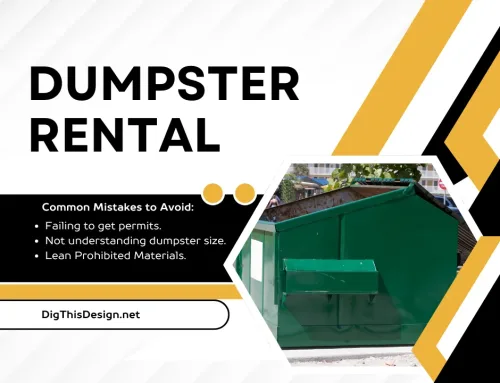The journey to homeownership is filled with excitement and challenges, and understanding the steps to buying a house is essential for a smooth and successful experience. Whether you’re a first-time homebuyer or a seasoned homeowner looking to refresh your knowledge, this guide is tailored to help you navigate the intricate process of purchasing a new home.
This Guide is a Path to Homeownership
Preparing for Homeownership
The path to unlocking the door to your new home starts with two crucial aspects: assessing financial readiness and building a solid credit profile.
Assessing Financial Readiness
Assessing financial readiness involves thoroughly examining your current financial situation, including savings, income, and existing debts. This step is vital to ensuring that you can afford not only the initial purchase costs, such as a home down payment and closing fees, but also the ongoing expenses of homeownership, including mortgage payment, property taxes, maintenance, and homeowners insurance.
Building a Strong Credit Profile
A strong credit profile is another essential for home buying Your credit score can significantly impact your ability to secure a home loan, and also affects the interest rate you’ll receive. Regularly monitor your credit report for any errors and work on improving your score by making timely payments, reducing your debt, and maintaining a low credit utilization ratio.
Understanding Mortgage Options
Various types of mortgages are available, each with its own set of terms and conditions, particularly when it comes to down payments.
A down payment is the percentage of a home’s purchase price you pay upfront. For instance, conventional mortgages typically require a 20% down payment, but there are also government-backed loans, like FHA and VA loans, that may allow for lower down payments.
A down payment can significantly affect your monthly mortgage payments and the amount of interest you’ll pay over the life of the loan. For example, if you make a down payment of less than 20%, you might be required to buy private mortgage insurance (PMI) – an additional fee that protects the lender if you default on your loan. If you can afford a larger down payment, you’ll likely benefit from lower monthly payments and potentially better loan terms.
Exploring Loan Programs and Assistance
Exploring loan programs and assistance can significantly ease the financial burden of buying a home. There are several loan programs designed to assist different groups of homebuyers, including:
FHA loans
Federal Housing Administration (FHA) loans are popular among first-time homebuyers due to their lower down payment requirements and more lenient credit score criteria than conventional loans. However, borrowers are required to pay for mortgage insurance, which increases the overall cost of the loan.
VA loans
The Department of Veterans Affairs Backs these loans, which are available to active-duty military members, veterans, and certain surviving spouses. VA loans offer numerous benefits, including no down payment, no mortgage insurance, and competitive interest rates.
USDA loans
The United States Department of Agriculture (USDA) loans target buyers in rural and certain suburban areas, promoting rural development. USDA loans offer no down payment options and lower interest rates, making them attractive for eligible buyers seeking homeownership in less densely populated areas.
Budgeting for Homeownership Costs
While your mortgage may be the most significant expense, it’s crucial not to overlook other costs, including:
Property Taxes
Property taxes fund local services and infrastructure. These taxes vary significantly by location and can fluctuate over time, so being aware of these costs upfront is vital for budgeting purposes.
Maintenace and Repairs
When it comes to renting vs. buying a home, owning a home means being responsible for all maintenance and repairs. This is a stark contrast to renting, where the landlord typically handles these situations. Experts recommend setting aside 1% to 4% of the home’s purchase price annually for maintenance and repair costs. This fund will cover everything from minor repairs to major systems replacements, such as roof or HVAC systems.
Utilities
Utilities, including water, electricity, gas, and internet are additional costs that can vary widely depending on the size of your home and usage. While these costs may be partially covered in a rental situation, homeowners need to budget for these expenses in full.
HOA Fees
Additionally, if your home is part of a homeowners’ association (HOA), you must factor in HOA fees. These fees contribute to the maintenance of common areas and, depending of the association, can also cover services like trash removal and snow plowing.
Upfront Costs
Beyond the recurring costs, homeownership comes with upfront costs such as closing fees, home inspections, and potential renovations or updates.
Emergency Fund and Miscellaneous Costs
An emergency fund is also crucial for homeowners, providing a financial cushion for unexpected repairs or personal emergencies that could impact your ability to pay your mortgage. Also, don’t forget to budget for the cost of moving furnishing, and personalizing your new home.
Managing Homeownership Expenses
managing homeownership expenses effectively is crucial to maintaining your financial health while enjoying the benefits of homeownership. Central to this is understanding and prioritizing homeowners insurance coverage.
Homeowners insurance is not just a mandatory requirement by mortgage lenders, but also a safety net that protects your largest investment, your home. It protects your personal property against damages caused by fire, theft, storms, and other unforeseen circumstances. It can also provide liability coverage if someone is injured on your property.
The cost of homeowners insurance can be significant, but its coverage level is invaluable. To manage this expense effectively, shop around for quotes from various providers and select a policy that offers the best balance of cost and coverage. Be cautious about choosing a policy based solely on price. A cheaper policy may not provide adequate coverage, leaving you financially vulnerable.
Also, consider ways to reduce your expenses. For example, energy-efficient appliances can lower your utility bills. If you’re in an area with high property taxes, check if you’re eligible for any exceptions or reductions.
Conclusion
Preparation and knowledge are key components to successfully managing this significant life milestone. Whether it’s understanding mortgage options, exploring loan programs, or budgeting for homeownership costs, each of these home-buying tips can help you unlock the door to your dream home with confidence.
Other posts you might enjoy:
Philadelphia’s New Construction Homes: The Advantages of Making a Fresh Start





